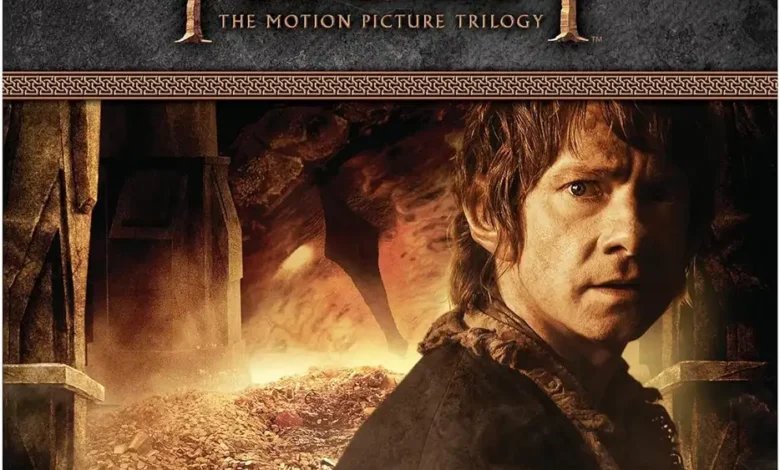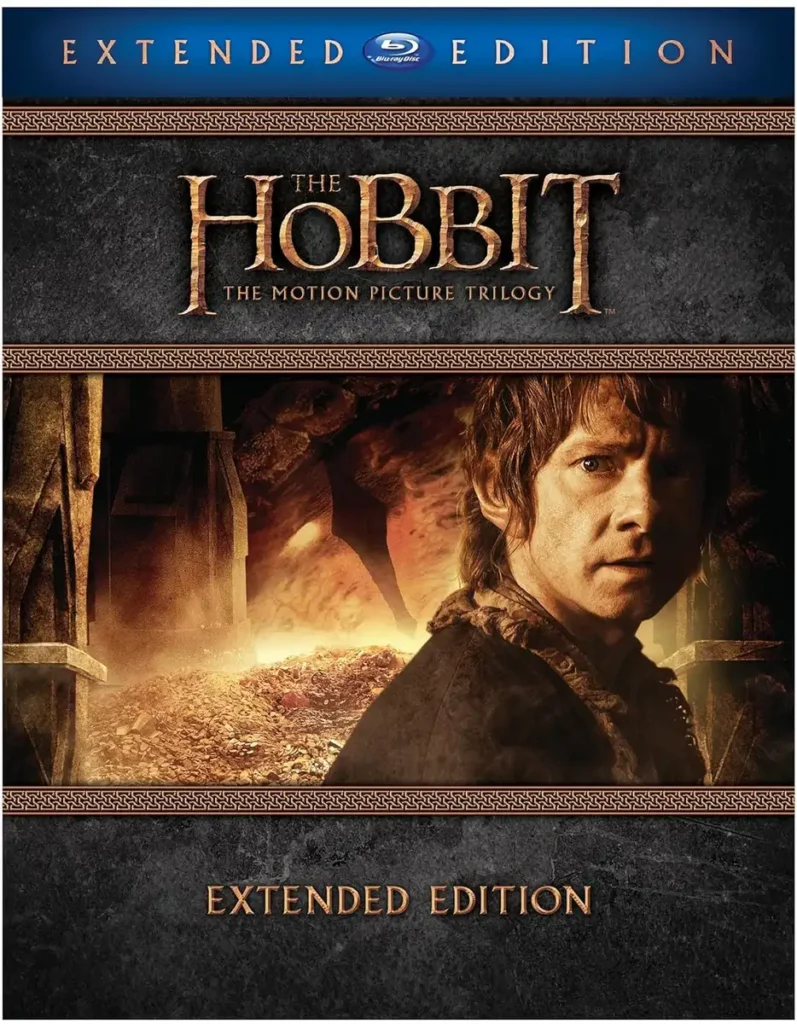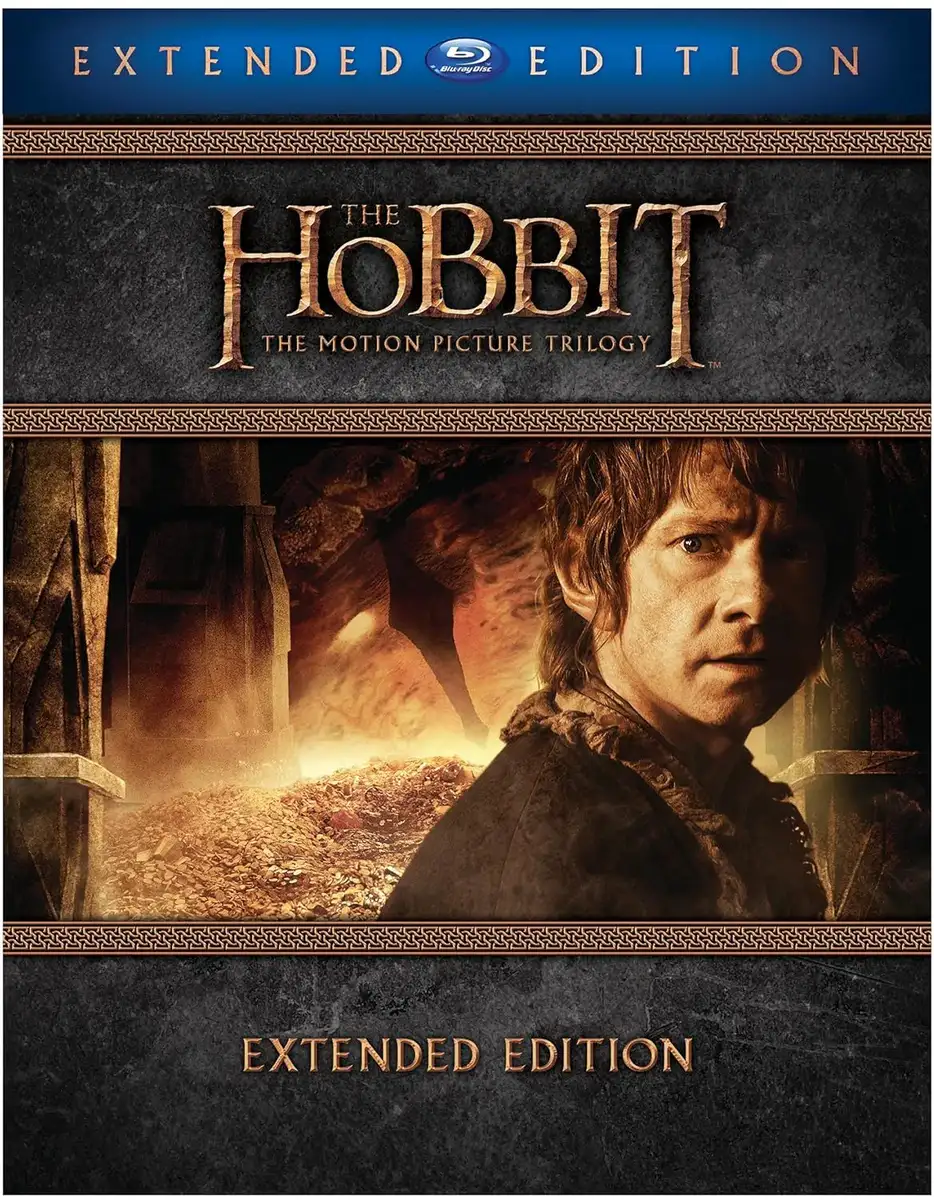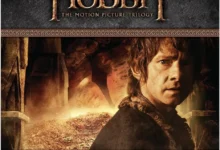The Hobbit Trilogy: A Cinematic Adventure Journey

The Hobbit: The Motion Picture Trilogy
Fantasy enthusiasts worldwide rejoiced when J.R.R. Tolkien’s timeless classic, “The Hobbit,” made its way to the silver screen in the form of a captivating motion picture trilogy. Let’s embark on a journey through the Shire and beyond, exploring the intricate details that make “The Hobbit: An Unexpected Journey,” “The Desolation of Smaug,” and “The Battle of the Five Armies” monumental cinematic experiences.

The Hobbit: The Motion Picture Trilogy (Extended Edition) (Blu-ray) Let’s embark on a journey through the Shire and beyond, exploring the intricate details that make “The Hobbit: An Unexpected Journey.”
Introduction
In the realm of fantasy cinema, few sagas have left as indelible a mark as “The Hobbit” motion picture trilogy. This three-part epic, directed by visionary filmmaker Peter Jackson, brought to life the enchanting world of Middle-earth with spellbinding visuals, stellar performances, and a musical score that resonates in the hearts of fans.
Background and Development
Adapting J.R.R. Tolkien’s literary masterpiece was no small feat. The meticulous planning and dedication of the production team, led by director Peter Jackson, ensured that the essence of the novel wasn’t just preserved but elevated to new heights on the big screen. From selecting the right cast to scouting locations that mirrored Tolkien’s vision, every detail was crucial.
Casting and Characterization
The success of any fantasy film hinges on the actors’ ability to breathe life into their characters. With Martin Freeman as the endearing Bilbo Baggins, Sir Ian McKellen reprising his role as Gandalf, and a host of talented actors taking on iconic roles, the casting was nothing short of spectacular. The challenge lay in maintaining the delicate balance between staying true to the source material and infusing fresh interpretations.
Visual Effects and Cinematography
At the heart of the “The Hobbit” trilogy lies groundbreaking visual effects and cinematography. The utilization of cutting-edge technology to recreate Middle-earth’s landscapes, creatures, and epic battles set a new standard for the fantasy genre. The seamless integration of CGI with practical effects provided audiences with a visual feast that enhanced the storytelling without overshadowing it.
Music and Soundtrack
No epic journey is complete without a mesmerizing musical backdrop. Composers Howard Shore and Neil Finn crafted a soundtrack that not only complemented the narrative but became an integral part of the viewing experience. The haunting melodies and stirring themes added emotional depth, creating an immersive world that lingered in the minds of viewers long after the credits rolled.
Costume and Set Design
The visual allure of “The Hobbit” trilogy extends beyond the characters to encompass the entire world of Middle-earth. The meticulous work of costume designers and set decorators brought Tolkien’s vision to life. From the intricate details of Elven garments to the rugged attire of Dwarves, each costume played a vital role in immersing the audience in the fantastical realms of the story.

Plot Overview: “An Unexpected Journey”
The first installment, “An Unexpected Journey,” sets the stage for Bilbo Baggins’ adventure. From his reluctant departure from the Shire to the fateful encounter with Gollum, the film navigates the challenges and discoveries that shape Bilbo into an unlikely hero. The movie received acclaim for its faithful adaptation, stunning visuals, and Martin Freeman’s charismatic portrayal of the titular hobbit.
Plot Overview: “The Desolation of Smaug”
Continuing the journey, “The Desolation of Smaug” delves deeper into the perilous quest to reclaim the Lonely Mountain. With the introduction of new characters such as Tauriel and the enigmatic Bard, the film expands the narrative while maintaining a relentless pace. The breathtaking confrontation with the dragon Smaug stands out as a cinematic masterpiece, leaving audiences on the edge of their seats.
“The Battle of the Five Armies” is the plot summary.
The final chapter, “The Battle of the Five Armies,” unfolds in an epic clash that determines the fate of Erebor. As alliances are forged and betrayals unfold, the film crescendos into a visually stunning and emotionally charged battle. The resolution of character arcs and the bittersweet conclusion of the trilogy left an indelible mark on fans, cementing “The Hobbit” as a cinematic triumph.
Critical Reception and Awards
Critics and audiences alike were divided on certain aspects, yet the trilogy garnered widespread acclaim. The performances, visual effects, and fidelity to Tolkien’s world were lauded. Notable awards, including Oscars for technical achievements, solidified the trilogy’s place in cinematic history.
Legacy and Impact
“The Hobbit” trilogy’s influence extends far beyond the screen. Its success paved the way for a resurgence of interest in fantasy films and inspired a new generation of filmmakers. The enduring legacy is evident in the continued celebration of Hobbit Day, fan conventions, and the presence of Middle-earth in popular culture.
Fan Community and Merchandise
The fervent fanbase of “The Hobbit” trilogy has become a vibrant community. Fan art, fan fiction, and spirited discussions keep the magic alive. Merchandise, from replica weapons to intricately designed collectibles, allows fans to carry a piece of Middle-earth into their daily lives.
Analogy with the trilogy “The Lord of the Rings”
While “The Hobbit” and “The Lord of the Rings” share a common lineage, they diverge in tone and scope. The comparison fuels passionate debates among fans, with some favoring the epic scale of the latter and others cherishing the intimate journey of Bilbo in the former.
Director’s Cut and Extended Editions
Peter Jackson’s penchant for detail is evident in the extended editions of “The Hobbit” trilogy. Additional scenes and character moments enrich the storytelling, prompting discussions among fans about the merits of these extended versions compared to the theatrical releases.
Looking Ahead: Future of Middle-earth on Screen
Exciting announcements about upcoming projects set in Middle-earth have fueled anticipation among fans. As the cinematic journey through Tolkien’s world continues, the fan community eagerly awaits new tales and fresh perspectives that will expand the rich tapestry of Middle-earth on screen.
Price
Conclusion
In the realm of fantasy filmmaking, “The Hobbit” motion picture trilogy stands as a testament to the power of storytelling, visual artistry, and the enduring magic of J.R.R. Tolkien’s imagination. As we reflect on the epic journey from the cozy corners of the Shire to the fiery depths of Erebor, one cannot help but marvel at the impact this trilogy has had on cinema and the hearts of fans worldwide.
FAQs
- Will there be more movies set in Middle-earth after “The Hobbit” trilogy?
- While nothing is confirmed, recent announcements suggest new projects exploring Middle-earth are in development.
- How faithful is “The Hobbit” trilogy to J.R.R. Tolkien’s novel?
- While some deviations exist, the trilogy generally stays true to the core narrative and themes of Tolkien’s work.
- Are there any plans for a remastered version of “The Hobbit” in the future?
- There have been discussions, but no official announcements regarding a remastered version.
- Which character from “The Hobbit” trilogy is the most beloved among fans?
- Bilbo Baggins and Gandalf the Grey often top the list, with their endearing personalities and memorable moments.
- Are there any Easter eggs or hidden references in the trilogy that fans might have missed?
- Yes, the films are riddled with subtle nods to both “The Hobbit” novel and “The Lord of the Rings” trilogy, providing delightful surprises for keen-eyed viewers. See More…


